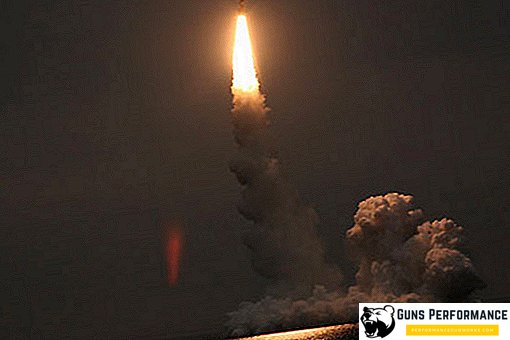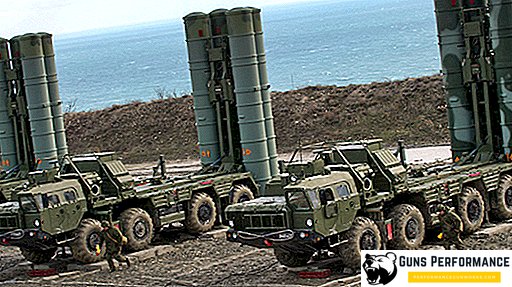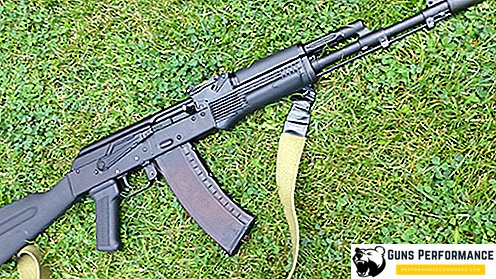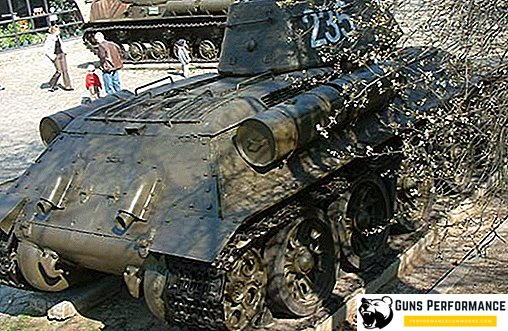It can be stated with great confidence that today strategic nuclear forces are one of the main guarantees of the sovereignty of the Russian state. If we compare the current potential of the Russian army with the potential of the armies of the NATO countries (quantitative and qualitative), then this comparison will not be in favor of Russia. The Russian Armed Forces are being modernized (a lot of useful material was made in 2018 and is scheduled for 2018), new weapons are sent to the troops, but all this is happening extremely slowly and in insufficient quantities. So, at the moment, the role of strategic nuclear weapons in ensuring Russia's national security is hard to overestimate. The nuclear arsenal is one of the major factors allowing Russia to remain one of the most important geopolitical players in the modern world.

Most of the "nuclear shield" went to Russia from the Soviet Union and today this arsenal is gradually falling out of action due to the natural cause of aging. Russian strategic nuclear forces require a major upgrade, and this can be said about all three components of the "nuclear triad". There is a movement in this direction, but the rate of change is clearly insufficient. Especially, given the huge amount of work that needs to be done. The modernization of strategic nuclear forces will require a huge amount of resources, primarily material ones. In order to solve this truly daunting task, the Russian state will need to mobilize all the managerial and intellectual potential at its disposal.
One of the most important components of the Russian strategic forces are intercontinental ballistic missiles installed on nuclear submarines. This component of the "nuclear triad" is the most dangerous for the enemy, because it has the greatest secrecy and is least vulnerable to destruction. Underwater nuclear leviathans are capable of secretly maneuver for months in the waters of the oceans and deliver a deadly strike at settlements and military industrial facilities of the enemy with lightning speed. Missiles are launched from a submerged position; a submarine can float among the Arctic ice and inflict a dagger lightning strike. Destroy submarine to launch missiles is very difficult.

The development of the nuclear submarine fleet was one of the priorities in the USSR. They didn’t spare money for submarines; the best minds of the country worked on their creation. Soviet submarines carried regular duty in the waters of the oceans, ready at any moment to make a nuclear strike on the enemy. In 1991, the USSR was gone, and hard times for the submarine fleet. New ships were not mortgaged, funding was cut, a serious blow was dealt to the scientific and industrial base. Submarines built under the USSR were aging both morally and physically. Only in 2007 the first atomic bomber of the new fourth generation was launched, the submarine “Yuri Dolgoruky”. His main weapon was the intercontinental missile R-30 Bulava.
The development of submarines of the fourth generation began in the late 70s of the last century, at the same time for future ships began to develop their main weapon - a missile system with an intercontinental rocket.
The history of the "Mace"
Since 1986 in the Soviet Union for the rearmament of submarine missile carriers of Project 941 “Shark” and armament of future ships of Project 955 “Borey” a new Bark ballistic missile was developed. Until 1998, three tests of the new rocket were conducted and all of them were unsuccessful. In addition, in those years, the general situation at the enterprises that manufactured the missile system was so bad that they decided to abandon the Bark project. It was necessary to build a new rocket. The order for its construction was taken from Miassky KB them. Makeeva (who produced almost all Soviet sea-based ballistic missiles) and transferred to the Moscow Institute of Thermal Engineering (MIT). It was there that the Topol and Topol-M missiles were created. This was one of the arguments for transferring orders to developers who had never built submarine missiles before.
Thus, they wanted to unify the sea and land ballistic missiles, reducing their cost. Opponents of this approach pointed to the lack of experience at MIT and the need to rework the submarine for a new rocket. Nevertheless, the decision was made and design work began.
The first test launch of the model of the future Bulava rocket took place on September 23, 2004 from the Dmitry Donskoy nuclear-powered nuclear-powered ship. The first three test launches were normal, and the fourth, fifth and sixth ended in failure. The rocket in the first minutes of the flight deviated from the course and fell into the sea. During the sixth launch of the rocket, the engines of the third stage failed and it self-destructed. The seventh start-up was partially successful: one combat unit did not reach the proving ground in Kamchatka.

The eighth and ninth missile launches in 2008 were successful, and during the tenth launch, the missile lost its course and self-destructed. The eleventh and twelfth missile launches also ended disappointingly.
On June 28, 2011, the first launch of the Bulava from the board of the Yuri Dolgoruky, a regular rocket carrier, took place and was successful.
In March 2012, Minister of Defense Serdyukov announced the successful completion of the Bulava tests, and in October of the same year the missile was put into service. The production of the missile complex is carried out by the FSUE "Votkinsk Plant", which also produces Topol ballistic missiles.
Description of the Bulava rocket
Full information about the technical characteristics of the P-30 is not, it is classified.
Rocket R-30 "Bulava" consists of three solid-fuel stages and a stage of breeding combat units. There is an opinion that
the unit separation stage runs on liquid fuel, however, this is doubtful, since MIT specializes in solid fuel systems. The rocket uses fifth generation fuel with high energy efficiency.

The casing of the rocket stages is made of composite materials using high strength aramid fiber, which allows increasing the pressure in the combustion chamber and obtaining a higher impulse.
The first stage engine starts immediately after the rocket leaves the water. The first stage engine runs up to the fiftieth second of flight. The engines of the second stage work up to the ninety second of flight, after that the engines of the third stage are switched on. Information on the characteristics and design of the stage of dilution of combat units is very scarce.
After passing through the zone of blocking nuclear strikes, the head fairing is separated. The Bulava missile is equipped with a split head for individual targeting, which consists of six (according to other information, ten) warheads. They have small dimensions, conical shape and high speed of flight. Also in the stage of breeding blocks is the complex to overcome the enemy's missile defense, but we know nothing about its structure and characteristics. The warheads of the Bulava rocket have a high degree of protection against a nuclear explosion.

There is unverified information about changes in the principle of the breeding of the Bulava missile warheads. In some sources it is reported that the missile warheads can freely maneuver, and the developers also declare a very high targeting accuracy compared to previous Soviet and Russian missiles. In their opinion, it is precisely this factor that will be able to compensate for the relatively small power of combat units, as critics of the R-30 have repeatedly pointed out. The deflection radius of combat units is no more than 200 meters. Missile General Designer Solomonov claims that the Bulava has a higher degree of survivability than previous generation rockets.
Control system "Bulava" - astroradioinertial. The on-board computer system processes the data received from optical-electronic equipment, which during the flight determines the coordinates of the rocket, studying the location of the stars, and also exchanging information with the GLONASS information system satellites.
Bulava Rocket Video
Rocket R-30 "Bulava" is sent to the flight from a special container installed in the launch vehicle’s mine, using a powder accumulator. A salvo launch of all ammunition found aboard a submarine is possible. Start is carried out both in the underwater and surface position.
According to experts, the Russian industry can produce up to 25 Bulava R-30 missiles per year.
Technical characteristics of R-30 "Bulava"
| Type of | intercontinental, sea-based |
| Flight range, km | 8000 |
| Type of warhead | separable, with blocks of individual guidance |
| The number of warheads | 6-10 |
| Control system | autonomous, inertial CCPM |
| Throw weight, kg | 1150 |
| Start type | dry |
| Starting weight, t | 36,8 |
| Number of steps | 3 |
| Length, m: | |
| missiles without head | 11,5 |
| missiles in launch canister | 12,1 |
| Diameter, m: | |
| rockets (maximum) | 2 |
| launch canister | 2,1 |
| The length of the first stage, m | 3,8 |
| The diameter of the first stage, m | 2 |
| First stage mass | 18,6 |
The Bulava missile is often criticized. It is mainly caused by two indicators: insufficient range and modest throw weight. According to critics, according to these characteristics, the Bulava corresponds to the outdated American Trident missiles of the previous generation.
In 2018, another two Project 955 submarines were laid, which will arm the R-30 missile.












